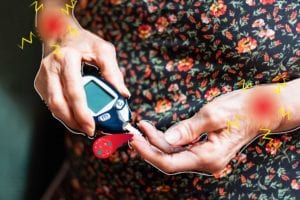

About 84 million Americans have prediabetes, or borderline high blood sugar. If you’ve been diagnosed with it, there’s a 25 percent chance that you’ll develop full-blown diabetes within the next three to five years. Add arthritis to the mix, however, and your odds get even worse.
That’s the implication of a new report from the Centers for Disease Control and Prevention (CDC), which found that 32 percent of adults with prediabetes also have arthritis. The key issue:
“Approximately half of adults with both prediabetes and arthritis are either physically inactive or have obesity, further increasing their risk for type 2 diabetes,” say the authors.
The statistics on the overlap of arthritis, prediabetes, and obesity were derived from the 2009-2016 National Health and Nutrition Examination Surveys (NHANES).
Type 2 diabetes has become an epidemic that shows no signs of slowing. Some experts have said it “represents one of the greatest global health challenges of our time,” and figuring out how to curtail it has been a major focus of public health research. Studies like the large Diabetes Prevention Program (DPP) have provided proof that it’s often possible for people — including those who already have prediabetes — to dodge the disease by making lifestyle changes or taking medication.
According to findings from the DPP, people with prediabetes who participated in intensive lifestyle training for three years (personal counseling, 150 minutes of exercise per week, and dietary changes designed to help them lose 7 percent of their body weight) slashed their risk of developing type 2 diabetes by 58 percent. Those who instead took metformin, a drug that lowers blood sugar, reduced their risk by 31 percent (versus those who got a placebo).
Managing Prediabetes and Arthritis
While many people can take a pill, making major lifestyle changes isn’t easy. Exercise seems to be especially important for both lowering blood sugar and helping with weight loss, but getting regular physical activity can be difficult for people who have joint pain due to arthritis.
Of course, if you can find a way to be active with arthritis, the pay-off is even greater: You’ll reduce your risk of diabetes and improve your joint pain and mobility.
If you have arthritis and need help getting more exercise (whether you have prediabetes or not), talk to your doctor. Low-impact activities, like swimming, walking, and stretching tend to be safe bets.





